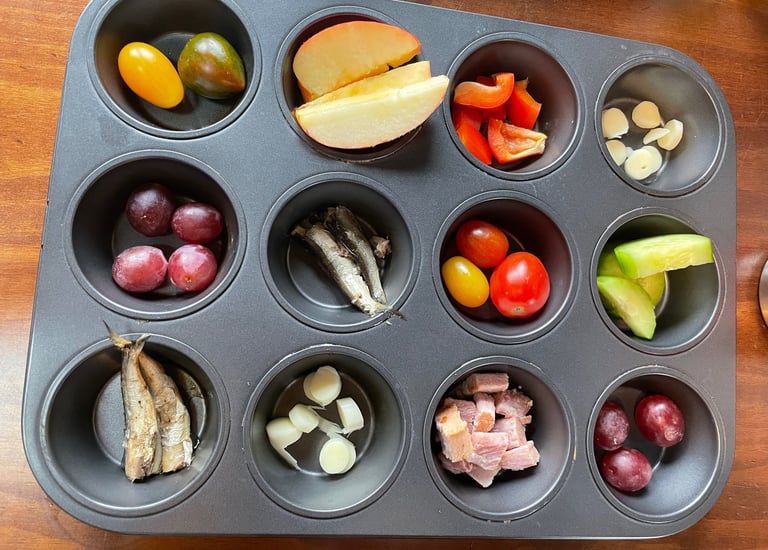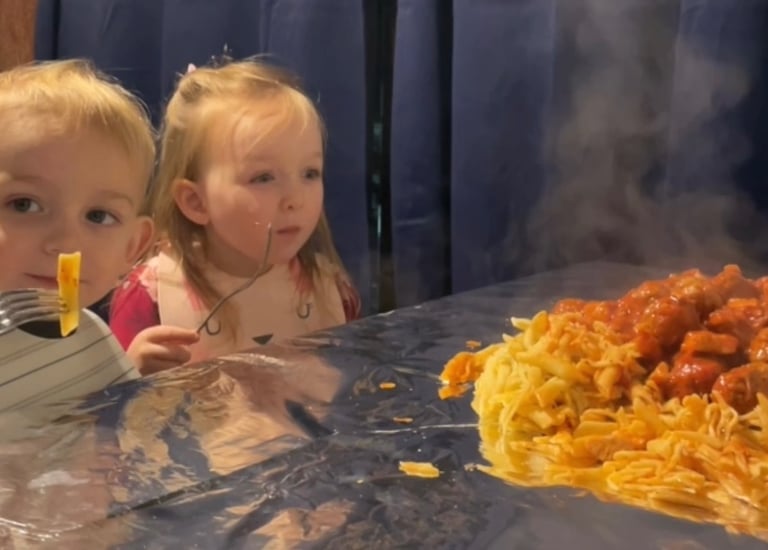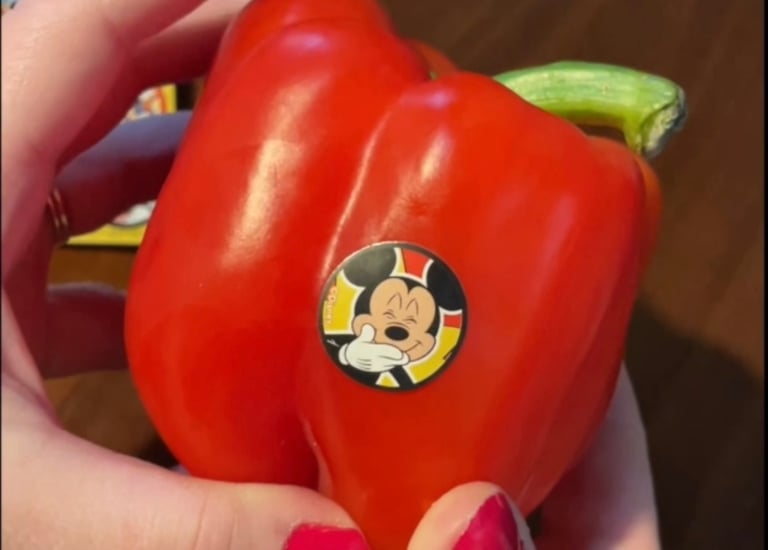New Ebook coming soon!
Toddler Eating Tips
Change the Presentation
Discover creative and simple ways to transform the presentation of kids' meals into fun, colorful, and engaging plates that will have even the pickiest eaters excited to dig in!


Skewers
Turn mealtime into a fun and interactive experience by serving healthy, bite-sized foods on skewers


Muffin Tins
Create a mini feast your kids will love by serving a variety of bite-sized foods in a muffin tin, turning snack time into a playful and colorful charcuterie board just for them!




"Bare" Table
Make mealtime exciting by serving food directly on the table, creating a fun, mess-friendly experience that encourages kids to explore and enjoy their meals!
Sticker Food
Delight your little ones by adding stickers or fun characters to their food, like a "Mickey Mouse pepper," transforming mealtime into a playful and engaging experience they'll love!





More Simple Meal Time Tips
















Stick to a Routine
Serve meals and snacks at the same times every day.
Limit grazing between meals so they come to the table hungry.
Offer Small Portions First
A big plate can feel overwhelming.
Let them ask for more if they’re still hungry—this gives them a sense of control.
Involve Them in Cooking
Kids are more likely to eat what they helped make.
Let them rinse veggies, stir, or pick between two meal options.
Be a Role Model
Eat the same meal with them when you can.
Show them that you enjoy your veggies too.
Limit Distractions
No screens or toys at the table.
Create a calm mealtime environment to keep focus on eating.
Keep Introducing Foods
It can take 10–15 exposures before a child accepts a new food.
Keep offering without pressure.
Serve One "Safe" Food
Always include one thing you know they like, even if it’s just plain fruit or bread.
This helps reduce anxiety and meltdowns.
Offer Choices (Within Limits)
Let them pick between two veggies or choose how their food is served (sandwich whole or cut).
This gives them a sense of autonomy while keeping boundaries.
Deconstruct Meals
Some kids don’t like mixed textures (like casseroles or soups).
Serve components separately—like plain rice, veggies, and protein on the side instead of mixed together.
Use Dips and Sauces
Toddlers love to dip! Try hummus, yogurt, ketchup, or ranch.
It can make new or less-favored foods more appealing.
Read Books or Watch Shows About Food
Stories like “The Very Hungry Caterpillar” or “Dragons Love Tacos” can spark interest.
Educational shows with kids eating healthy foods also normalize trying new things.
Rename the Food
Call broccoli “dinosaur trees” or carrots “super sight sticks.”
Fun names can remove resistance and add curiosity.
Set the Vibe
Keep the atmosphere low-stress and positive.
Try soft music, family-style serving, or a “restaurant night” at home.
Establish a “Try It” Routine
Create a low-pressure habit, like the “One Bite Rule” or “No Thank You Bite.”
Praise the trying, not the finishing.
Avoid Using Dessert as a Reward
This can make dessert seem more valuable and veggies feel like a punishment.
Instead, treat dessert like a normal part of some meals—sometimes yes, sometimes no.
Stay Consistent and Patient
Picky eating phases are normal—don’t panic.
Gentle consistency and exposure often lead to change over time.








"My son licked a shoe today but spit out the blueberries I gave him because they were 'too dirty.'"
— Josh T.
"My toddler asked for toast. I gave her toast. She screamed because I gave her the ‘wrong side’ of the bread."
— Haley P.
"I peeled the grapes. He cried because they were naked."
— Ryan L.
"My son ate half a crayon, then told me the carrots were ‘too crunchy.’"
— Lauren M.


"Want your toddler to eat? Easy. Just sit down and eat your own food; they'll be begging in front of you in seconds"
— Sherrie R.
Mom Taught Me
We lay the foundation, and you build on it
Partnerships
Support
momtaughtmelife@gmail.com
© 2024. All rights reserved.
